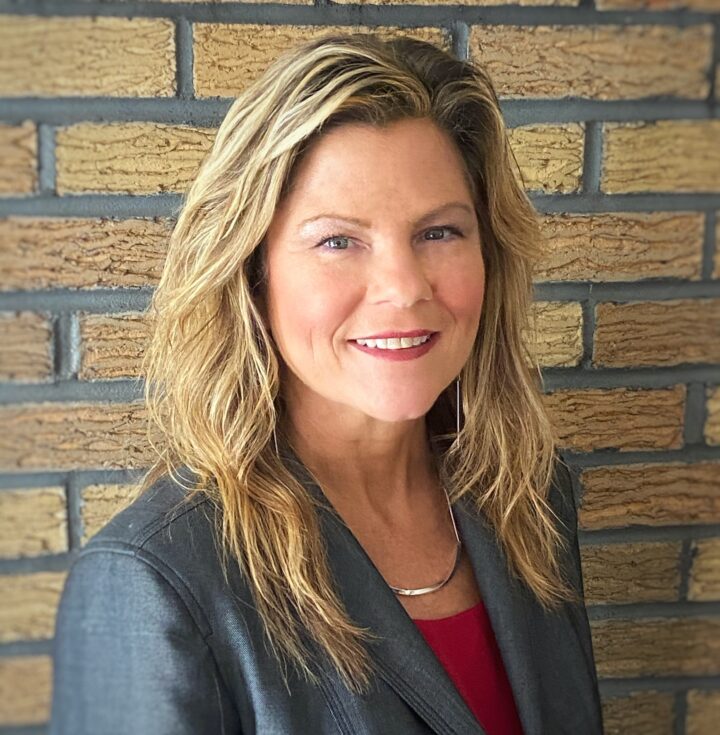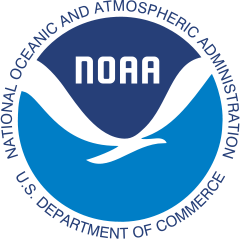
Research Physical Scientist
Earth System Processes and Interactions Division
Research Focus Areas:
- Coupled carbon-chemistry-climate Earth system model development
- Climate sensitivity to policy target emissions, including overshoot, stabilization, and reversibility
- Earth system impacts, carbon uptake, and predictability of climate change
- Improved understanding of climate-carbon cycle variability, interactions, and feedbacks
- Contribution to various international model intercomparisons and assessments
Contact Information:
phone (609) 452-6563
email lori.sentman@noaa.gov
Lori T. Sentman
Education
- Ph.D., Atmospheric Science, Rutgers University, 2018.
- M.S., Environmental Science, Atmospheric Science option, Rutgers University, 2002.
- B.S., Earth and Atmospheric Science, Rutgers University, 1997.
Research Highlights
BIOGEOCHEMISTRY
- Sanderson, B. M., V. Brovkin, R. Fisher, D. Hohn, T. Ilyina, C. Jones, et al. (2024). flat10MIP: An emissions-driven experiment to diagnose the climate response to positive, zero, and negative CO2 emissions, EGUsphere [preprint], https://doi.org/10.5194/egusphere-2024-3356
- Dunne, J. P., et al. (2020). The GFDL Earth System Model version 4.1 (GFDL ESM4.1): Overall coupled model description and simulation characteristics. J. Adv. Model., 12, https://doi.org/10.1029/2019MS002015
- Sentman, L. (2018). How the Central American Seaway alters large-scale ocean circulation, climate and marine biogeochemistry, (Doctoral dissertation).
Retrieved from Rutgers University Community Repository
(https://doi.org/doi:10.7282/T3JW8J31). New Brunswick, NJ: Rutgers University. - Dunne, J. P., J. John, E. Shevliakova, R.J. Stouffer, J.P. Krasting, S. Malyshev, et al. (2013). GFDL’s ESM2 global coupled climate-carbon Earth System Models Part II: Carbon system formulation and baseline simulation characteristics. J. Climate, 26(7), https://doi.org/10.1175/JCLI-D-12-00150.1
- Dunne, J.P., J. John, A. Adcroft, S.M. Griffies, R.W. Hallberg, E. Shevliakova, et al. (2012). GFDL’s ESM2 global coupled climate-carbon Earth System Models Part I: Physical formulation and baseline simulation characteristics. J. Climate, 25(19), https://doi.org/10.1175/JCLI-D-11-00560.1
- Sentman, L.T., E. Shevliakova, R.J. Stouffer, and S. Malyshev (2011). Time scales of terrestrial carbon response related to land-use application: Implications for initializing an earth system model. Earth Interactions, 15(30), https://doi.org/10.1175/2011EI401.1
- Shevliakova, E., S.W. Pacala, S. Malyshev, P.C.D. Milly, and L.T. Sentman (2009). Carbon cycling under 300 years of land use change: Importance of the secondary vegetation sink. Global Biogeochemical Cycles, 23, GB2022, https://doi.org/10.1029/2007GB003176 [Abstract PDF] Also in Nature Reports Climate Change | Vol 5 | April 2009
ATMOSPHERIC CHEMISTRY
- Zeng, G., N.L. Abraham, A.T. Archibald, S.E. Bauer, M. Deushi, L.K. Emmons, et al. (2022). Attribution of stratospheric and tropospheric ozone changes between 1850 and 2014 in CMIP6 models. https://www.essoar.org/doi/10.1002/essoar.10510050.1
- Allen, R., L.W. Horowitz, V. Naik, N. Oshima, F.M. O’Connor, S. Turnock, et al. (2021). Significant climate benefits from near-term climate forcer mitigation in spite of aerosol reductions. Env. Res. Lett., 16(3), https://doi.org/10.1088/1748-9326/abe06b
- Allen, R.J., S. Turnock, P. Nabat, D. Neubauer, Ü. Lohmann, D. Olivie, et al. (2020). Climate and air quality impacts due to mitigation of non-methane near-term climate forcers. Atmospheric Chem. Phys., 20(16), https://doi.org/10.5194/acp-20-9641-2020
- Morgenstern, O., F.M. O’Connor, B. Johnson, G. Zeng, J.P. Mulcahy, J. Williams, et al. (2020). Reappraisal of the Climate Impacts of Ozone-Depleting Substances. Geophys. Res. Lett., 47(20), https://doi.org/10.1029/2020GL088295
- Stevenson, D.S., A. Zhao, V. Naik, F.M. O’Connor, S. Tilmes, G. Zeng, et al. (2020). Trends in global tropospheric hydroxyl radical and methane lifetime since 1850 from AerChemMIP. Atmospheric Chem. Phys., 20(21), https://doi.org/10.5194/acp-20-12905-2020
CLIMATE AND CLIMATE SENSITIVITY
- Jeevanjee, N., D. Paynter, J.P. Dunne, L.T. Sentman, and J.P. Krasting (2025). A Holistic View of Climate Sensitivity. Annual Reviews, 53, https://doi.org/10.1146/annurev-earth-040523-014302
- Chemke, R., L. Zanna, C. Orbe, L.T. Sentman, and L.M. Polvani (2022). The future intensification of the North Atlantic winter storm track: the key role of dynamic ocean coupling. Journal of Climate, 35(8), https://doi.org/10.1175/JCLI-D-21-0407.1
- Dunne, J. P., et al. (2020). Comparison of equilibrium climate sensitivity estimates from slab ocean, 150-year, and longer simulations. Geophys. Res. Lett., 47, e2020GL088852. https://doi.org/10.1029/2020GL088852
- (2018). Role of Ocean Model Formulation in Climate Response Uncertainty. J. Climate, 31, 9313–9333, https://doi.org/10.1175/JCLI-D-18-0035.1
- Ding, Y., G. Chepurin, G. Stenchikov, A. Robock, L.T. Sentman, and J. Krasting (2014). Ocean Response to Volcanic Eruptions in Coupled Model Intercomparison Project 5 (CMIP5) Simulations. J. Geophys. Res. – Oceans, 119(9), https://doi.org/10.1002/2013JC009780.
- Anderson, J. L., et al. (2004). The new GFDL global atmosphere and land model AM2/LM2: Evaluation with prescribed SST simulations. J. Climate, 17(24), 46414673.
Awards & Honors
- NOAA Administrator’s Award (2022) – For advancing the understanding of the Earth system by developing and applying NOAA’s state-of-the-art coupled carbon-chemistry-climate model.
- US Dept. of Commerce Office of Atmospheric Research Award (2020) – Exemplary Service, Individual award recipient.
- NOAA/OAR Graduate Studies Program Scholarship (2012-2014).
- U.S. Dept. of Commerce Silver Medal, Scientific/Engineering Achievement (2013) – For the development and application of NOAA’s first comprehensive Earth System Models that couple the carbon cycle and climate to project changes.
- RS Information Systems Employee of the Month, Science and Engineering Division (2002).
- RS Information Systems Delighting the Customer Award (January 2002 & June 2002).
Professional Services
- Expert reviewer, Intergovernmental Panel on Climate Change, National Climate Assessment, NOAA Hollings Scholarship, & various scientific journals
- Scientific mentor, Rebecca Monge – Top 40 finalist 2021 Regeneron Science Talent Search
- Invited panelist and reviewer, Rider University Independent Scholarship and Creative Activities Presentations Day
- Invited presenter, Young Women’s Conference, Princeton Plasma Physics Laboratory
- Coordinator and visiting scientist, MJ Elementary School Science Fair



 https://orcid.org/0000-0003-1954-5564
https://orcid.org/0000-0003-1954-5564